When I thought of hiking in South America, my mind previously went straight to Patagonia’s glaciers and dramatic mountains. Then I visited Peru and that all changed. With it’s dramatic landscape and various regions and options for trekking, I came to realize that Peru might just be the hiking capital of South America.
There are more hikes in Peru than I can even count, but incorporating my experiences and those of other bloggers who love hiking and the outdoors, these are some of the best hikes in Peru, spanning several different regions, levels of difficulty, and lengths:
*Keep in mind, length can usually be altered, and difficulty is subjective. Acclimatizing is essential for all of these hikes and difficulty is assessed based on proper acclimatization and good fitness.
1. Inca Trail: 4 Days, Moderately Easy
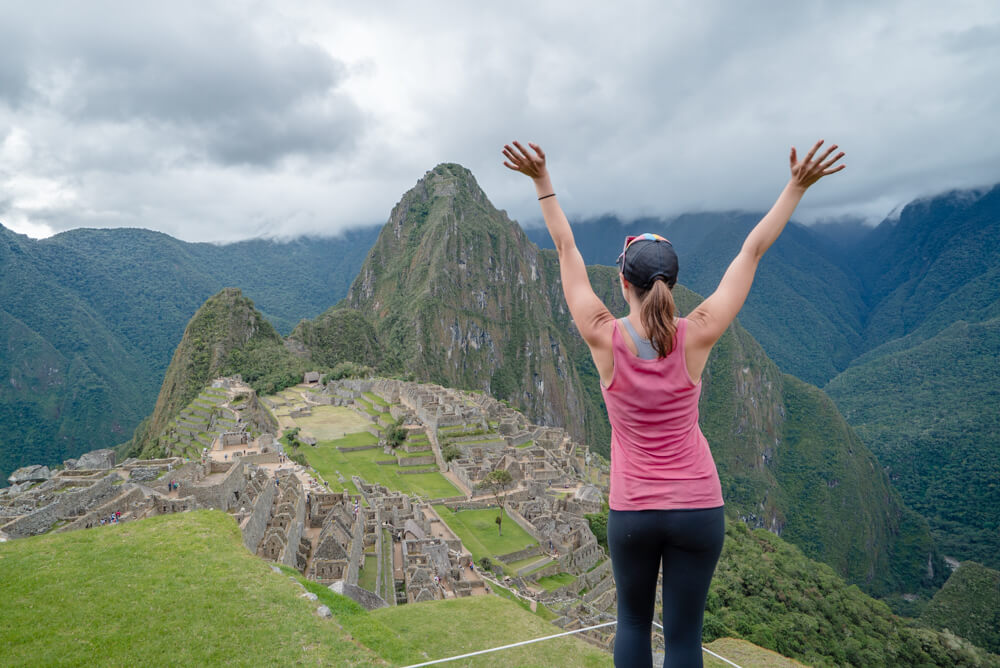
One thing’s for sure: you absolutely cannot go to Peru without visiting Machu Picchu, one of the seven ancient Wonders of the World. The classic and most famous way to get there is via the Inca Trail, the trail that the original Incans traversed. Most hikes are done over the span of four days, finishing with sunrise at the sun gate before descending into Machu Picchu.
I found it amazing that the trail is still 85% intact the way that the Incas built it. You also pass several impressive ruins on the way, and you get fed and treated like a queen! The jumping off point for the hike is Cusco, which is a lovely town with lots of great things to do nearby for the days that you spend acclimating. The trail is mostly easy though there are some steep parts, and it’s almost entirely stairs made of stone, which can be slippery and tough on the joints.
Though this hike is nothing short of incredible, it’s also Peru’s most popular hike and it does require permits. Here are a few essential things to remember:
- You must book far in advance: Permits are tied to your individual name and passport number and they sell out months in advance.
- You must have a guide: This can’t be done independently, so pick a company that has a good reputation and do the hike in comfort. Might as well!
- This is the only way to see Machu Picchu from the Sun Gate at sunrise.
2. Santa Cruz Trek: 4 Days, Moderate
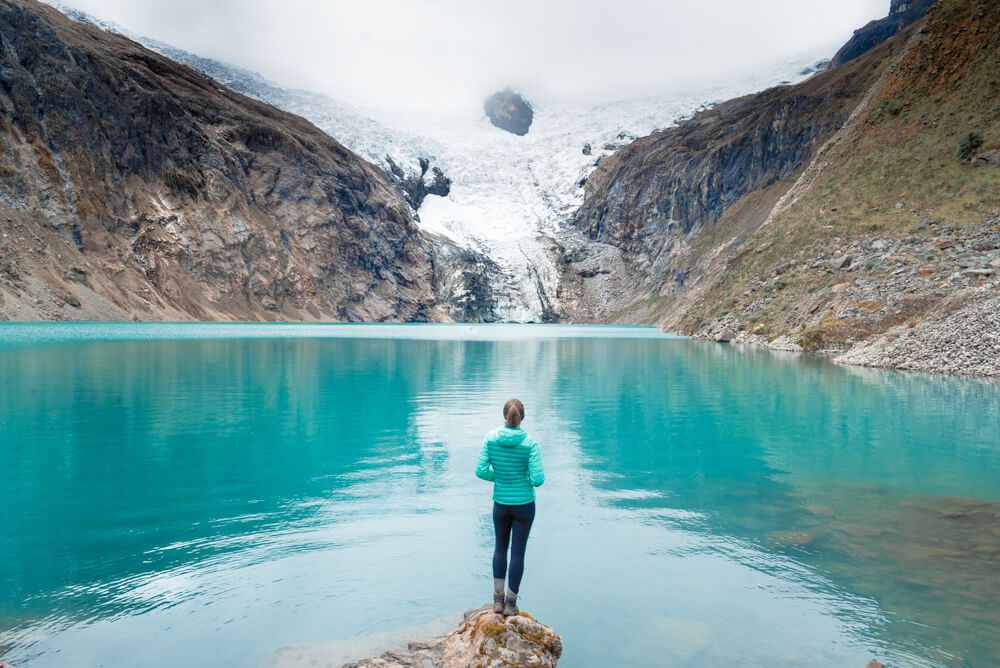
The Santa Cruz trek in Peru’s Huascarán National Park in the Cordillera Blanca mountain range is considered by many experienced hikers to be one of the most beautiful in the world, seriously! The entire hike is framed by dramatic mountains, glaciers, and deeply blue lakes. Begin by heading to Huaraz, Peru, which is an 8 to 9 hour bus ride north of Lima.
Like most hikes in Peru, this one is pretty high up. Acclimatizing is absolutely essential in order to enjoy or even attempt it. Much of the hike takes place over 4000m elevation, with the highest point topping out at 4750 m. Most people tackle it over the span of four days, though if you’re particularly fit, you can do it in three.
The trek is moderately difficult, mostly due to the altitude, and especially if you decide to go independently and carry your own gear. It’s also possible to join a group with a guide, which includes donkey porters. I chose to do this one independently and found some great ways to avoid the crowds. You can read more about it here. Here are some more essential things to know:
- The hike is wet. Plan on wearing waterproof boots!
- It’s a through hike, and you can go in either direction.
- This is a great hike to use for preparing for Huayhuash, discussed below.
3. Laguna 69: 1 Day, Moderately Easy
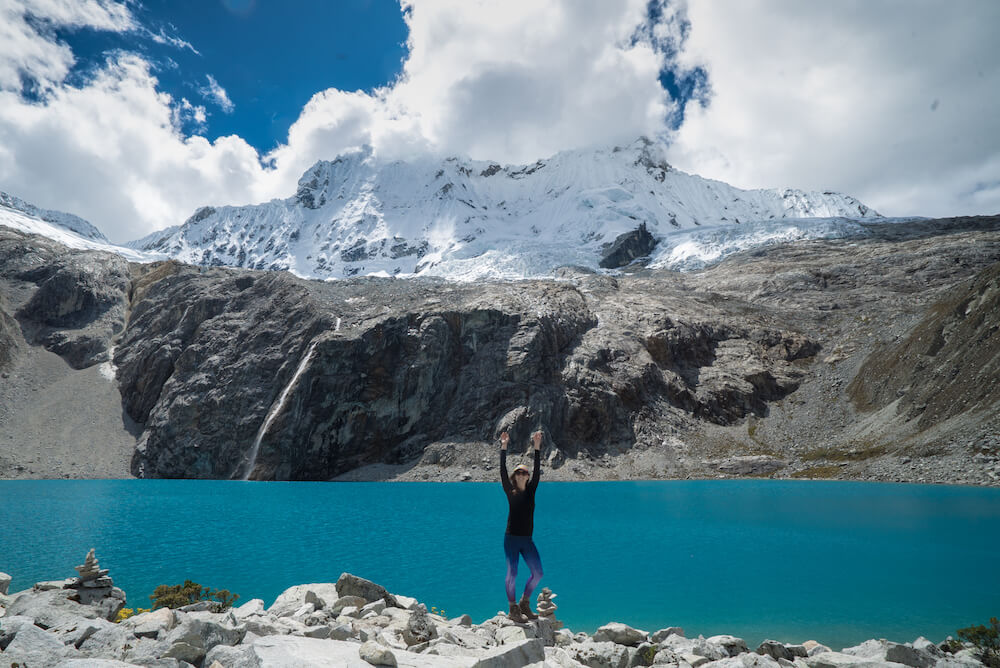
Laguna 69 is one of the most dramatically blue-colored glacial lakes I have ever seen, which is why it’s the most popular hike out of Huaraz in Huascarán National Park. This is another one that is very high up, topping out at 4600 m. It’s not a long nor steep hike, at only 6 km, though the altitude makes it difficult for many.
The best way to do this is to take a guided tour, mostly because transport can be difficult coming back to Huaraz if you go independently. Be sure to look around town and get the cheapest tour possible (right now that’s a cost of 35 soles). Everyone ends up on the same bus anyway. If you only have one day in Huaraz, make this the hike that you do, but make sure that you are acclimated first! You can read more about who to book with and how to prepare for Laguna 69 here.
4. Rainbow Mountain: 1 Day, Moderate
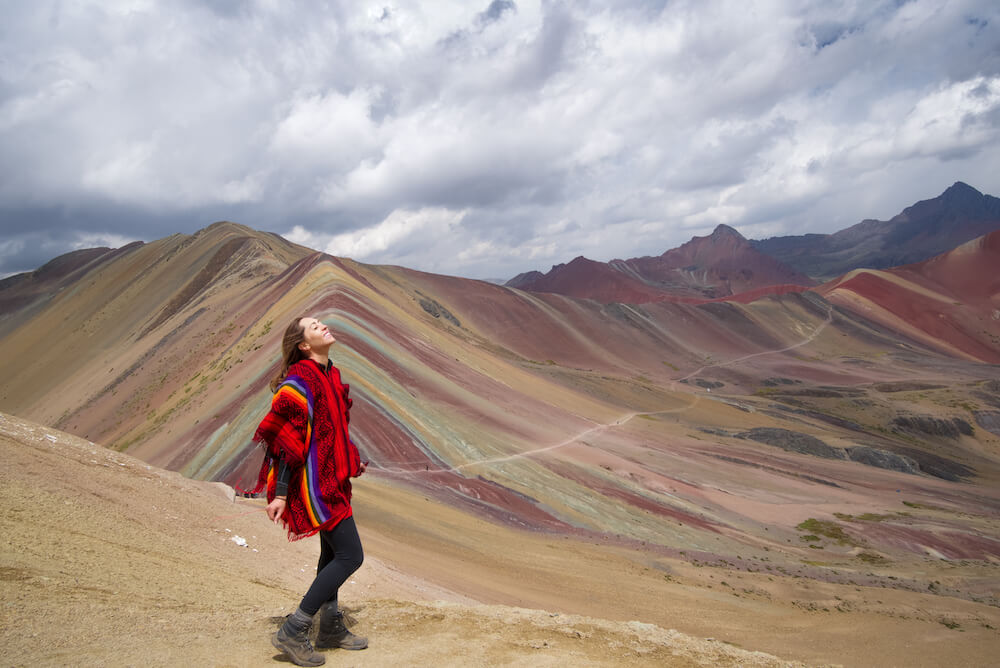
Several years ago, due to a receding glacier, Rainbow Mountain (AKA Vinicunca and Montaña de Siete Colores) was uncovered and became Insta famous almost overnight. It’s no surprise why this is so popular with visitors to the Cusco region, I mean just look at it!
The mountain you see in the picture is the most famous feature of the trail, but the entire landscape is rainbow colored and stunning.
The trail is mostly flat, and not very long, however it tops out at around 5000 m, which is just shy of Everest base camp! Many people attempt this trail only a day or so after arriving in Cusco and have severe altitude sickness issues. Seriously acclimate for this one. If possible do the Inca Trail first.
Your day will begin bright and early, around 3 or 4 AM, in Cusco. From there it is a 3-hour drive to the start of the trail. Expect to be back in Cusco around the evening.

If you’d rather not walk this one, it’s also possible to hire a horse for around 40 Soles. If you’re traveling during high season and think you might want to horse, hire one from the very beginning. However for the most part, people will be offering you the option all along the trail. It’s also possible to hike to Rainbow Mountain over several days, discussed below. Word on the street is it’s a very difficult hike and at elevation to boot, but it’s also supposed to be beautiful and not very crowded. To read more about doing it in one day click here.
5. Salkantay: 4-5 Days, Moderate
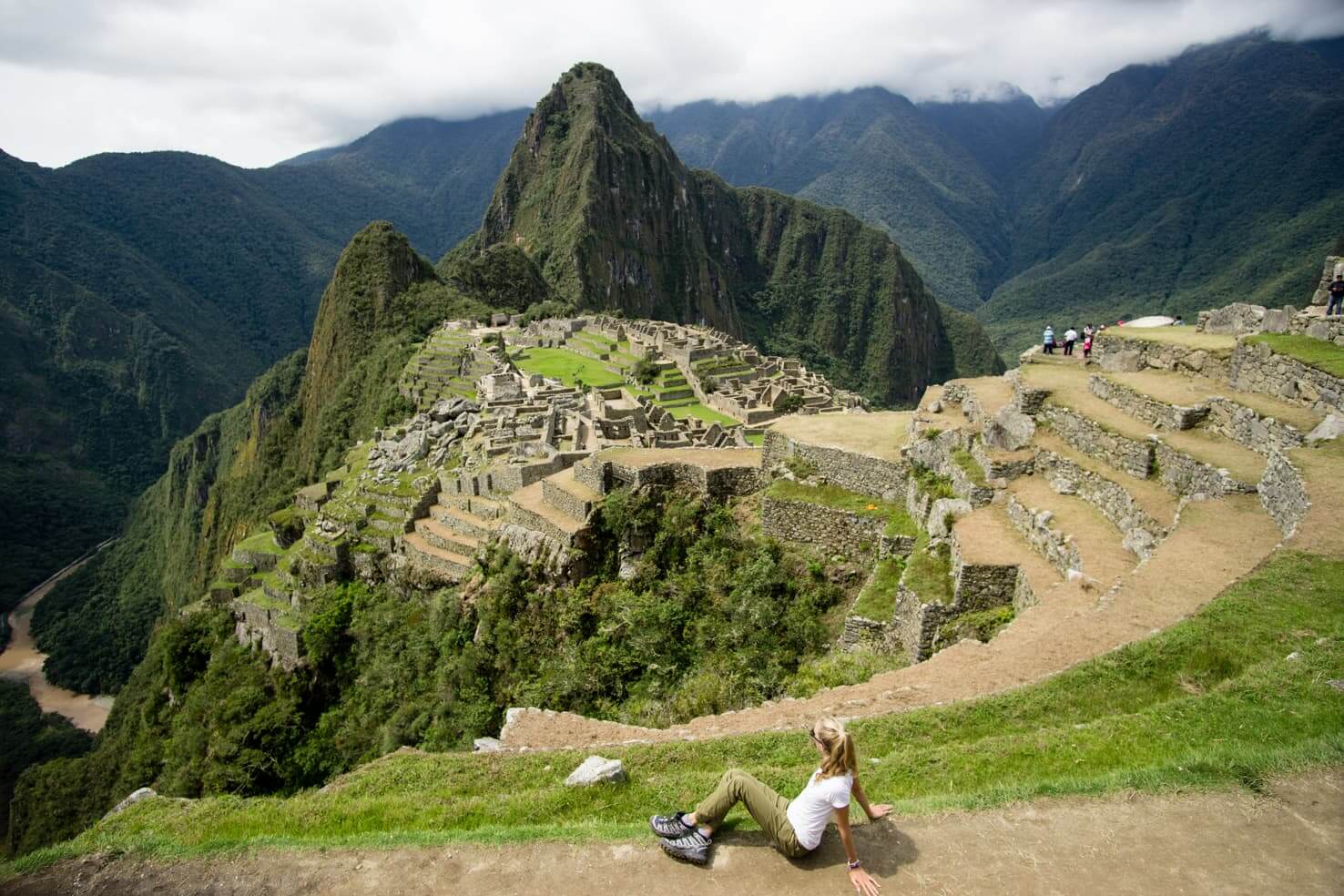
After 4 days trekking through the Andes, we reached Machu Picchu on the 5th day. We’d trekked 70km in total and went through different scenery every day, from snowy mountain passes to hot and humid jungles. We took a guided tour, but the trek can be also done independently in 3 or 4 days and doesn’t require a permit.
The trail itself is easy to find and well-trodden but the high altitude is an important factor to consider. It is a moderate trek through amazing landscapes with a phenomenal ending.
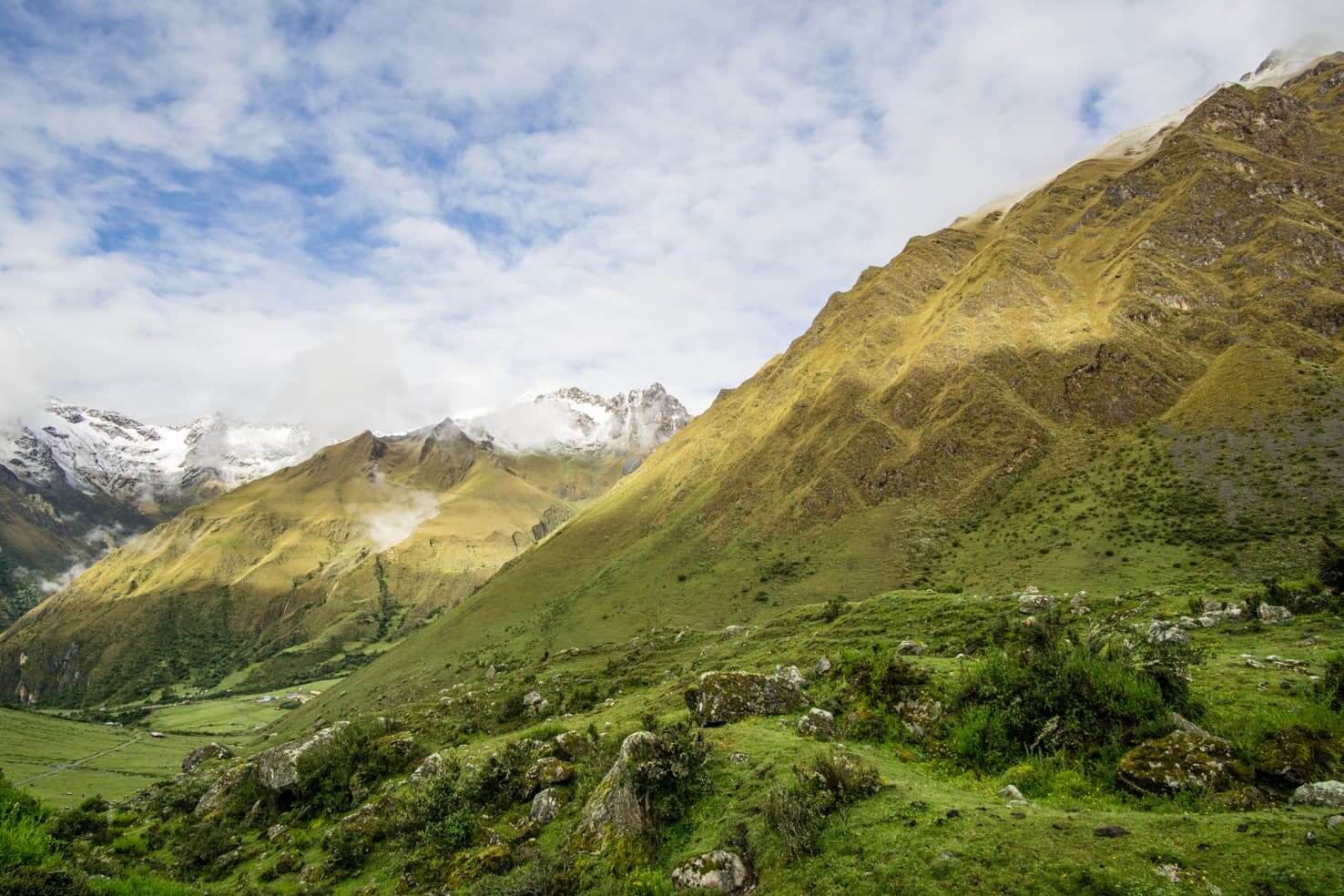
Most important tips for Salkantay Trek:
- Choosing the agency: We booked the trek in a random local agency in Cusco but I’d suggest asking several agencies before the purchase. A few people in our group paid much more than we did though we trekked together and received the same service. The usual price for a 5-day trek including a ticket to Machu Picchu and Machu Picchu Mountain is around 200USD.
- Acclimatization: The most important step for any trek in Peru. Cusco is at 3,400m and the highest point on the trek is Salkantay Pass 4,600m. It is very important to acclimatize in Cusco for at least 2 days before the trek. During the trek, drink lots of water and also try coca tea. It has nothing to do with the drug, it is an herbal tea which locals drink to help cope with the altitude. And many travelers, including ourselves, swear by it.
- Machu Picchu ruins: It is no longer possible to spend a whole day at the ruins. You can either go in the morning or in the afternoon. My suggestion is going in the morning; it is the only time when you can also hike up the Machu Picchu Mountain or Huayna Picchu (you would need to buy a separate permit for this). You will see the whole valley, Machu Picchu ruins from above and get a real sense of this incredible city built so high in the Andes.”
– Maya of Travel With The Smile
6. Ausangate: 5-6 Days: Moderately Difficult
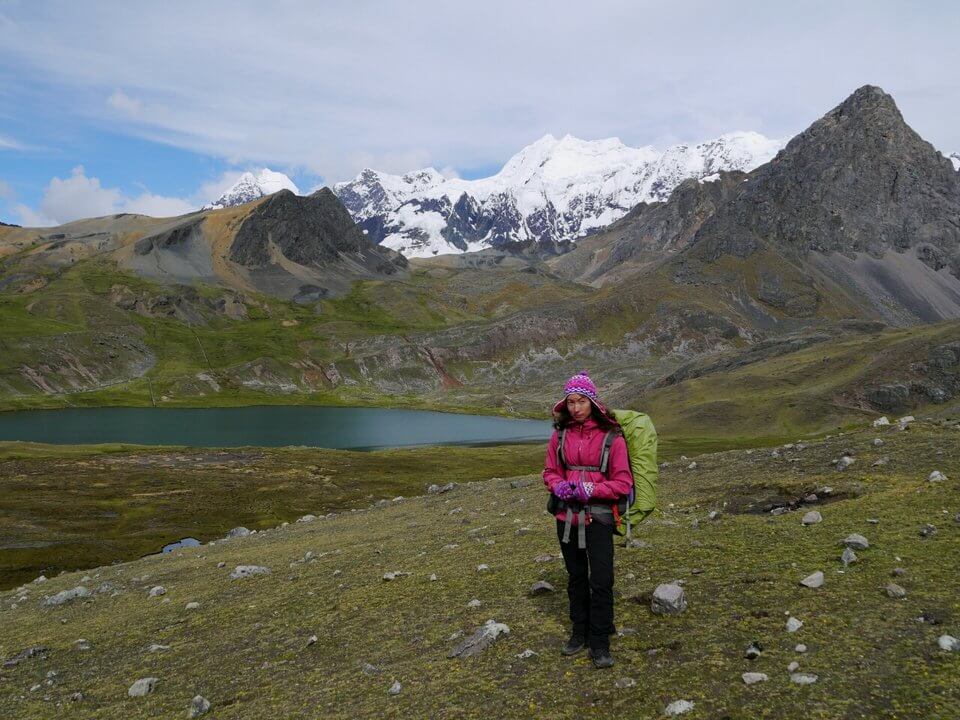
The total distance is 46km, and it takes between 5 and 6 days to compete the hike. We can rate Ausangate as a moderate/difficult hike, the main difficulty is the altitude, as the whole trail is above 4000m, with two passes over 5000m, so acclimatization here is essential. We’d suggest to spend a couple of days in Cusco and maybe do another hike to get used to the altitude before starting Ausangate. We hiked Salkantay and Choquequirao beforehand.
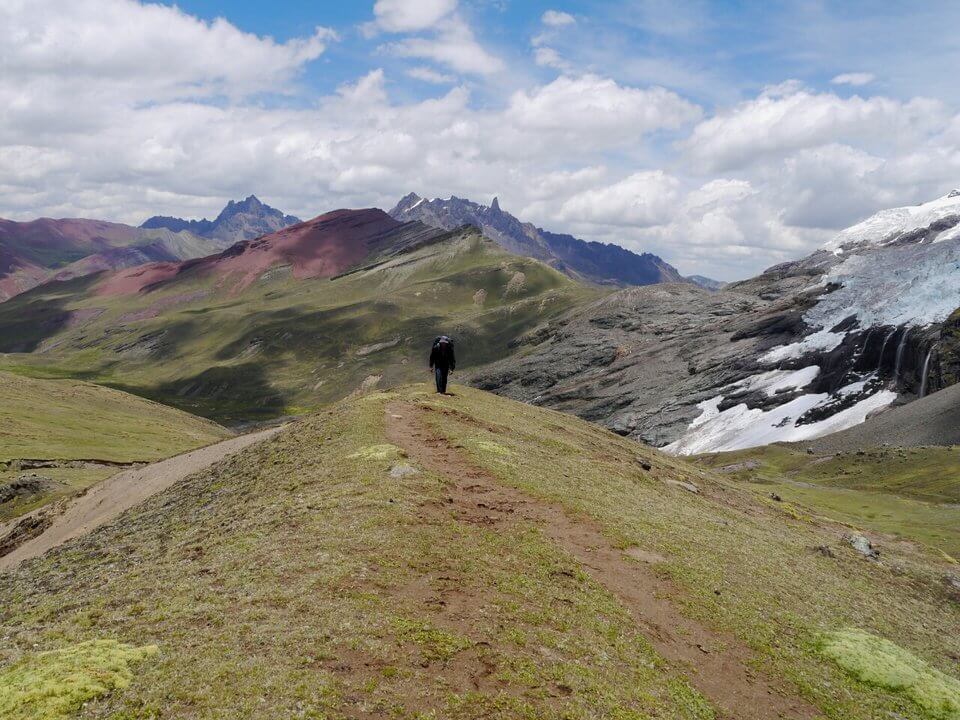
The hike can be done on your own, it’s not compulsory to have a guide, the trail is quite clear and easy to follow though we’d suggest to get a map and have a GPS backup just in case. We did the hike independently and the whole trip cost us about US$30 per person including food, transport and even some gear rentals. It’s easy to get to Tinque, the starting point of the hike, by bus from Cusco, the trip takes about 2 hours.”
– Campbell and Alya from Stingy Nomads
7. Huayhuash: 10 Days, Difficult
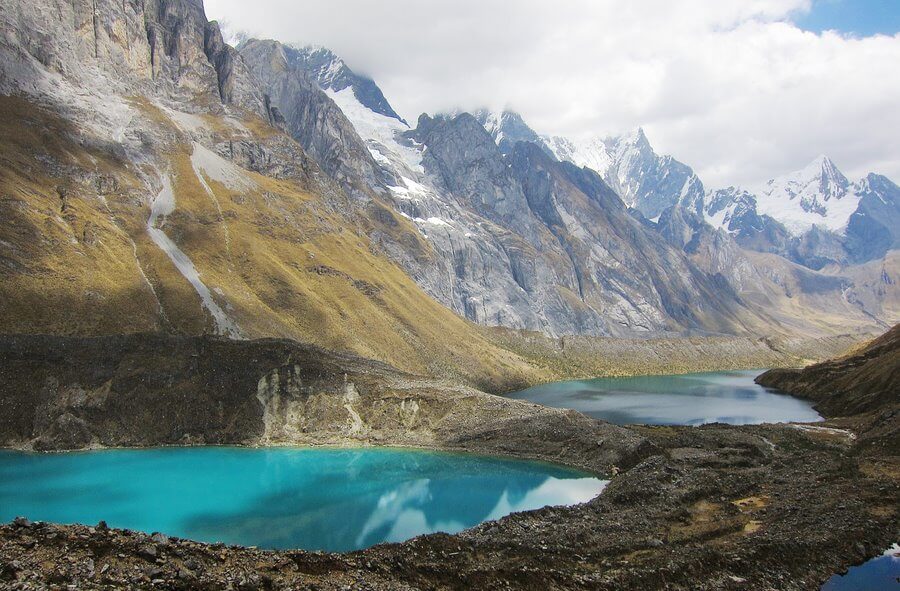
One of the peaks in the Huayhuash range is Siula Grande, featured in the movie “Touching the Void”. If you’ve seen the movie, you know how spectacular this area is. We passed numerous turquoise alpine lakes and forbidding snow-capped peaks. One for the bucket list for sure.
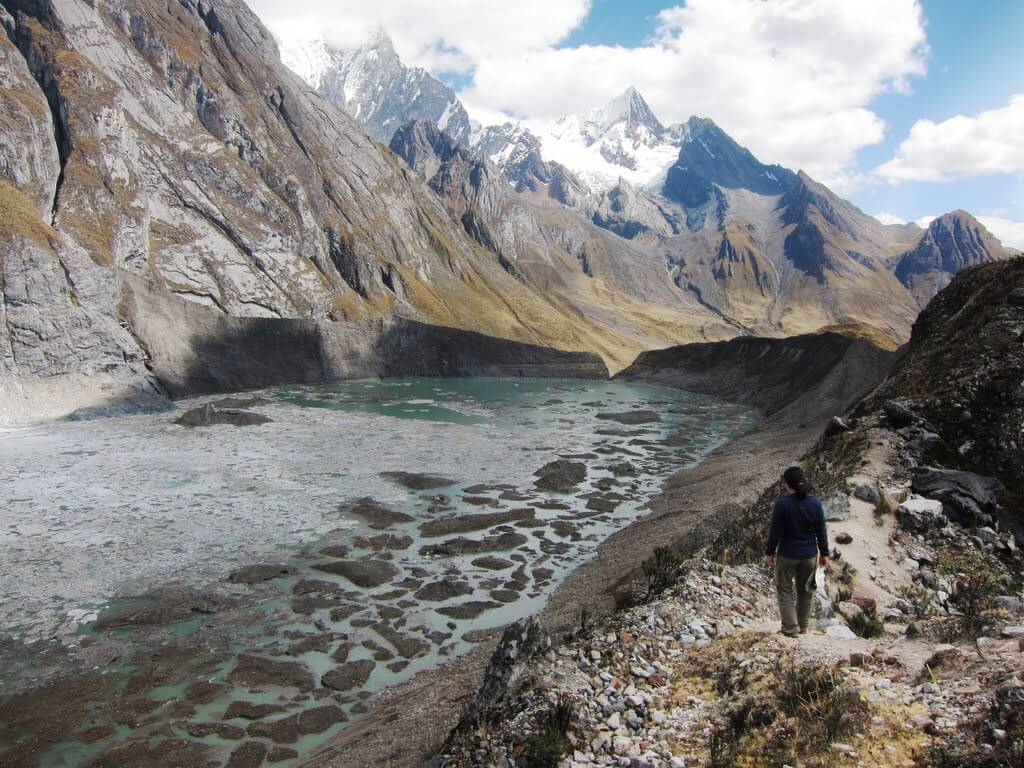
Hiring guide, and getting rental equipment can be arranged from Huaraz, the nearest town where you should spend a few days acclimatizing.”
– Jil of Jack and Jill Travel the World
8. Colca Canyon: 2 Days, Moderate
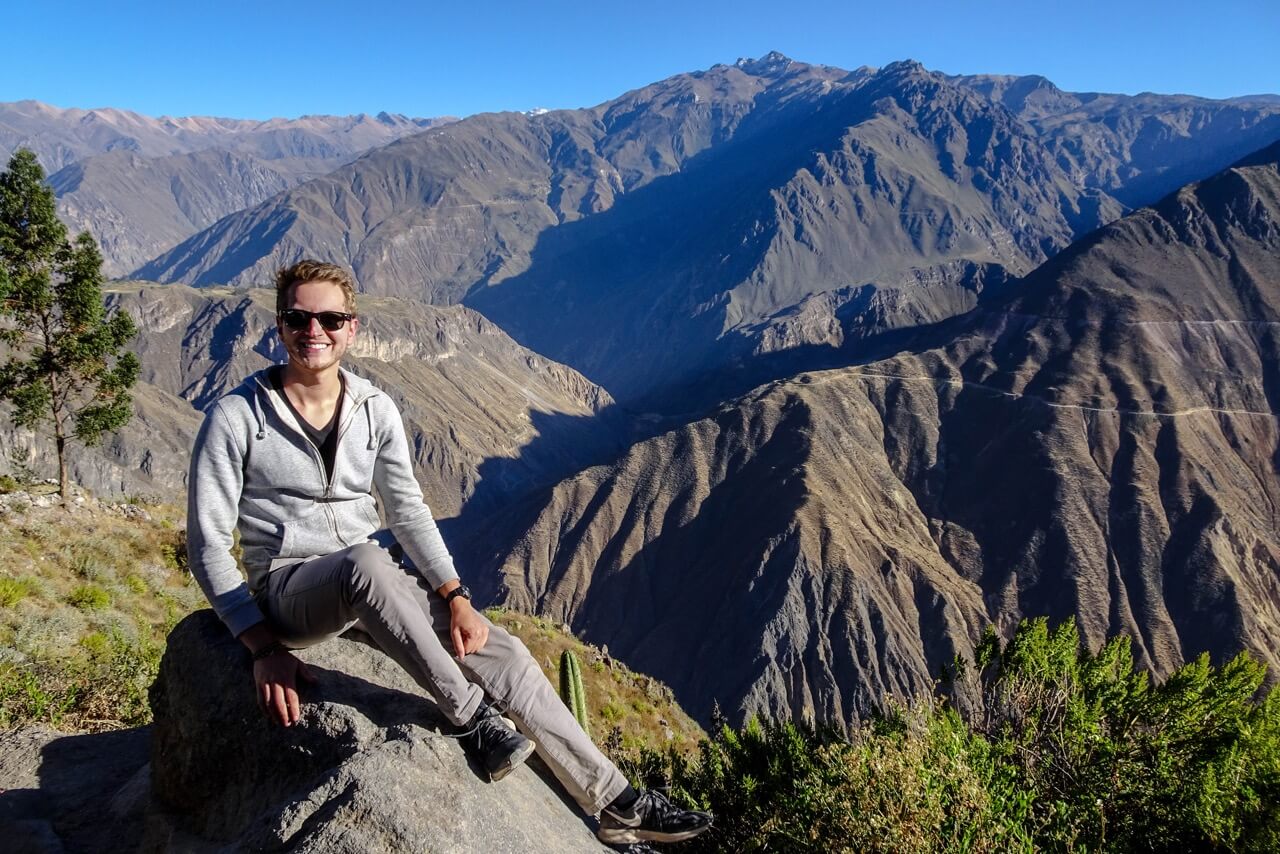
There are several tour companies offering the trip for a fair price, and in my opinion, the two-day trip is by far the best option. The hike was approx. 16 km on the first day, and 6 km on the second day. I’d describe it as medium-difficult due to the high elevation and the steep climb.
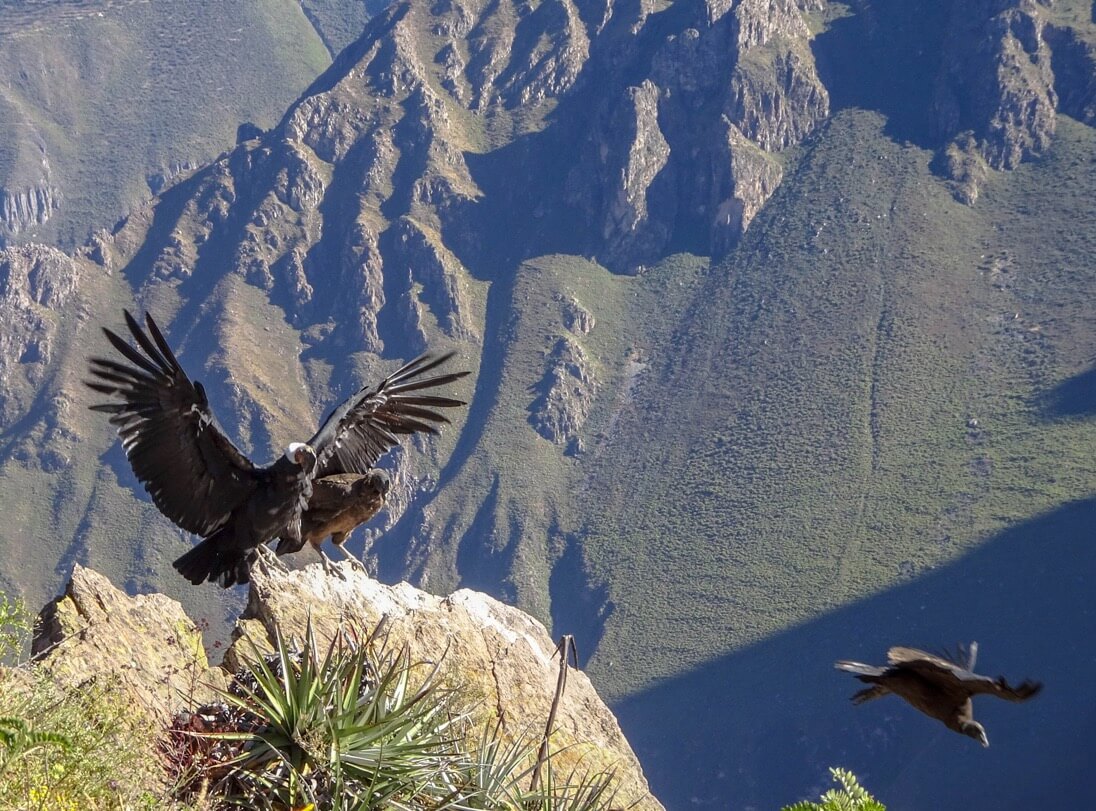
From Arequipa, it takes around 2-3 hours to reach the Colca Canyon, and you’ll be able to stop at some viewpoints, enjoying the incredible views and if you’re lucky, you’ll even spot some of the huge Andean condors. Finally, the hike into the canyon begins and you will spend your first few hours climbing down the steep and rocky trail into the canyon. While this part is quite exhausting, and you need to be careful due to the slippery rocks, the landscape in the canyon is rewarding. At the bottom, there are some local restaurants for lunch and you’ll walk further through small and local villages, crossing rivers and rocks while making your way through the canyon.
There are several lodges and accommodation facilities at the bottom of the canyon, where you will spend your evening and your night. If you’re hiking in the Colca Canyon as part of a 2-day tour, you’ll have a very early wake-up call around 4-5am, to make your way up the canyon again before sunrise to avoid the heat. The hike up is very exhausting, since it’s extremely steep and depending on your level of fitness, it will take you 2-4 hours to reach the top. Afterwards, breakfast is waiting for you and most tour agencies include a few stops at a viewpoint and hot springs on the way back to Arequipa. In case you decided to go for a 3-day tour, you will spend two nights in the canyon, giving you more time to relax and to enjoy the landscape.”
– Patrick from German Backpacker
9. Choquequirao: 5 Days, Difficult
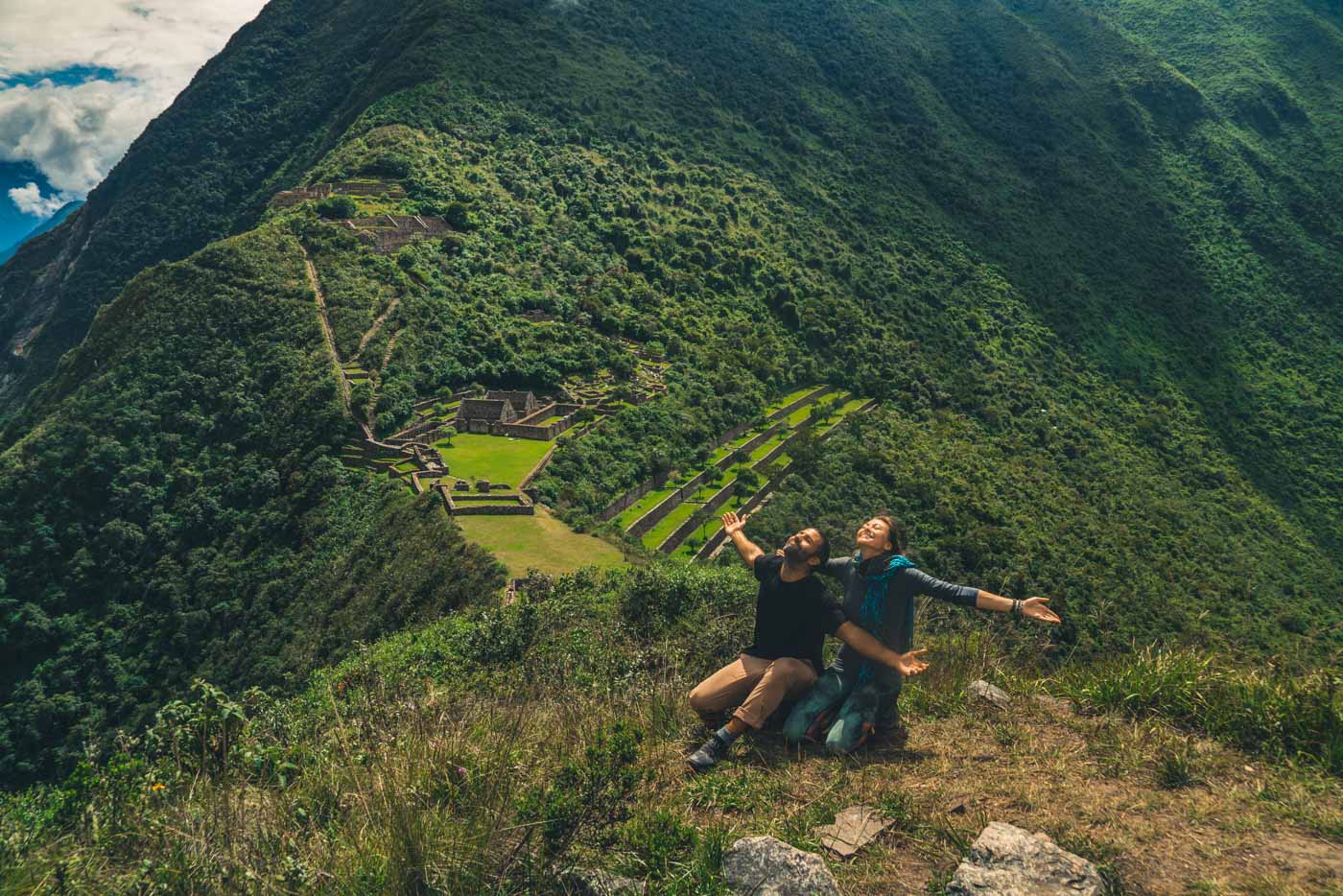
The trail to and from Choquequirao spans over 60 kms and the hike to the ruins is considered to be technical and challenging. Due to the daily altitude changes of up to 1,000-1,500, days are long and strenuous, but luckily the views along the way make up for the fitness challenge. The ruins themselves are impressive and well preserved. They may not be as well known as Machu Picchu, but they certainly are worth a visit.
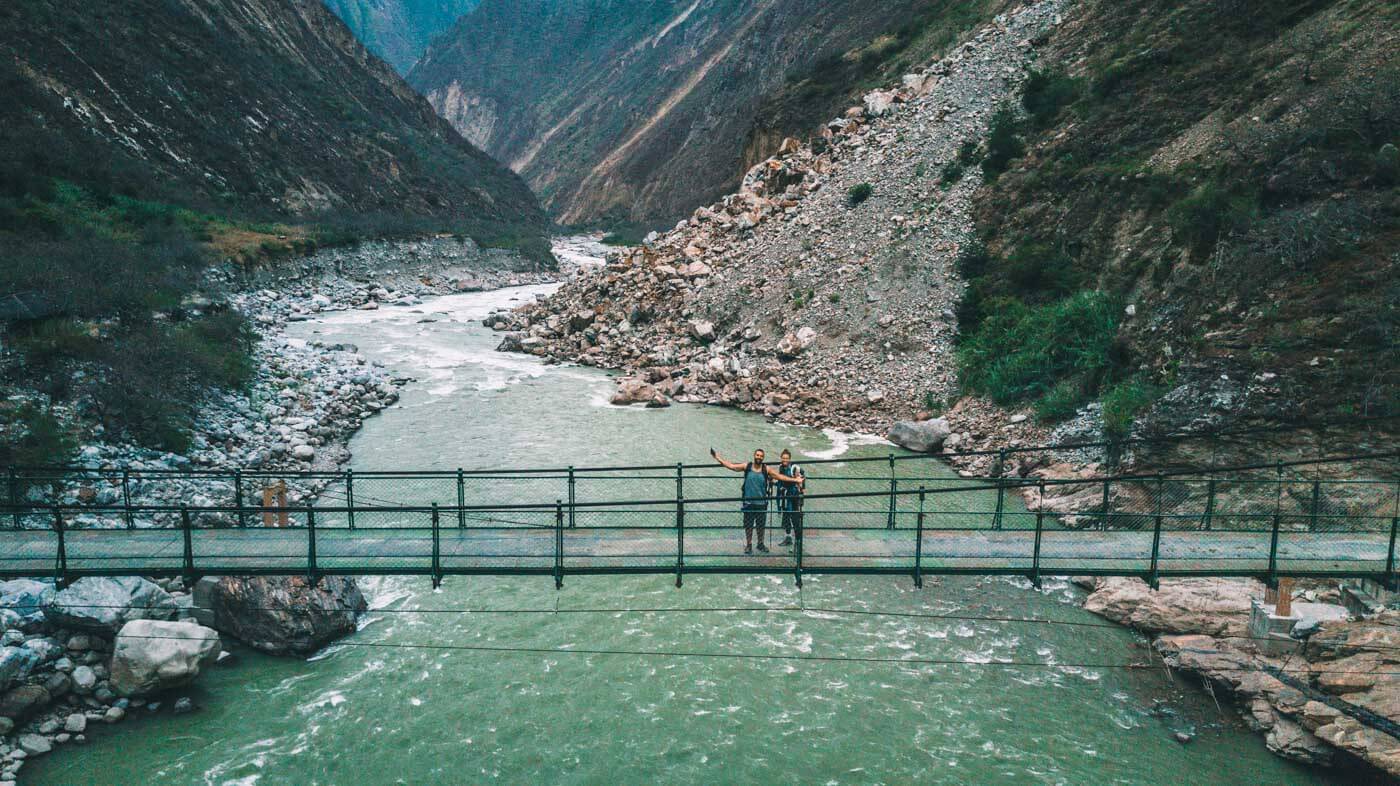
– Oksana & Max from Drink Tea Travel
10. Marcahuasi: 1 Day, Moderately Difficult

“Most people who visit Peru typically hike the Colca Canyon and venture to do the Inca Trail, so the majority of travelers don’t know where Marcahuasi is. To be fair, not even many locals do. Marcahuasi, located at 4000 meters above sea level, is a hybrid between a natural site (with rock formations resembling face shapes of both humans and animals) and an archaeological site. It can be reached via a strenuous walk from San Pedro de Casta, a tiny village located around 100 km from Lima and sitting at 3000 meters above sea level.
The trip to San Pedro de Casta is in and of itself an adventure: Factor in around 5 hours to cover the short distance, and a mixture of a cab ride to reach the bus/colectivo stop to catch the bus to Chosica from where buses leave to San Pedro de Casta. The trip usually lasts about 3 hours along the side of a mountain and with incredible cliffs that make the view and the overall trip literally breathtaking.
Though buses leave every day from Chosica to San Pedro, the same can’t be said for the buses back. They are supposed to leave every day at 2:00 pm, but in fact they leave just about whenever. This means that those who plan to hike Marcahuasi should count it as a 2 to 3 day trip as a minimum and consider spending the night in San Pedro de Casta, unless they have their own cars.
Once in San Pedro de Casta, visitors have to register themselves in the tourism office, located in the main square. It is impossible to miss it: the village receives such few visitors (no more than one or two per week) that they are immediately identified and welcomed by the locals. The woman at the tourism office typically walks visitors to the only hotel, a very modest “hospedaje municipal” which has private rooms with or without bathrooms (but no hot water) for no more than $6 USD per person. As it gets very cold at night, make sure to carry enough warm clothes and a sleeping bag too. The hotel provides blankets.
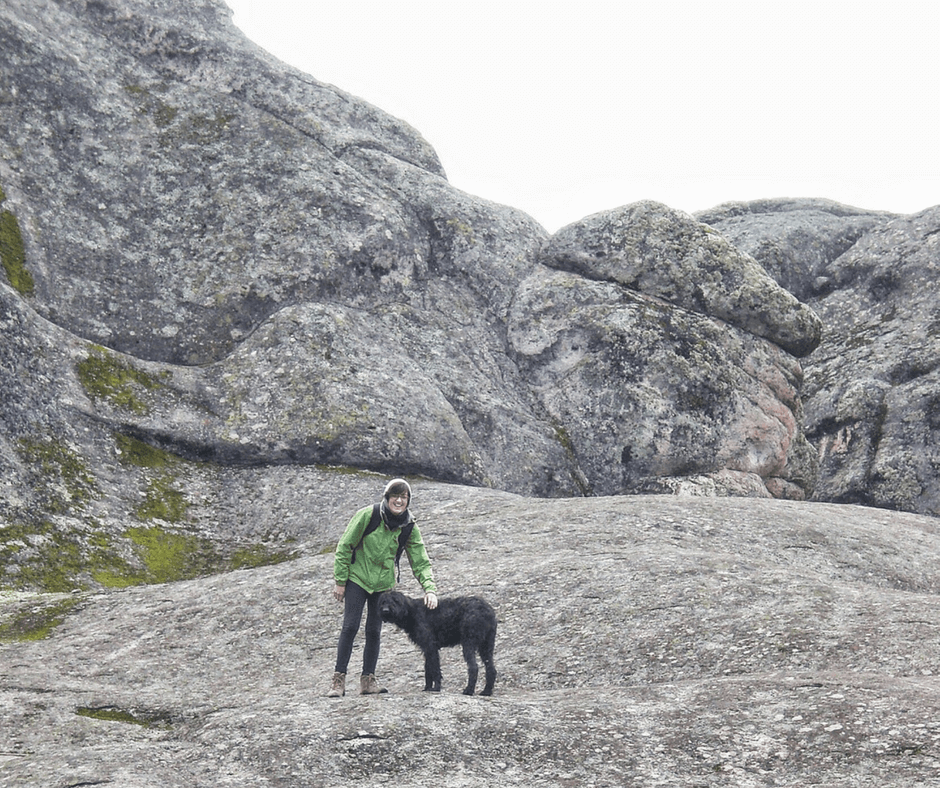
The actual hike can be done independently. It leaves from the village and follows a well marked trail. It takes between 6 and 8 hours to complete the trail. It is best to plan to leave right after sunrise, as it typically starts raining around 1:00 pm. There are no shops along the way, so make sure to carry plenty of water and snacks for the hike.
The hike itself (around 12 km round trip) is rather strenuous due to the high altitude. It’s possible to get horses in San Pedro de Casta.
On the way up, the views of the mountains are spectacular. Marcahuasi itself is a beautiful site, where silence rules – making the place rather eerie.” – Claudia of My Adventures Across the World
11. Chinchero to Urquillos: 1 Day, Moderate
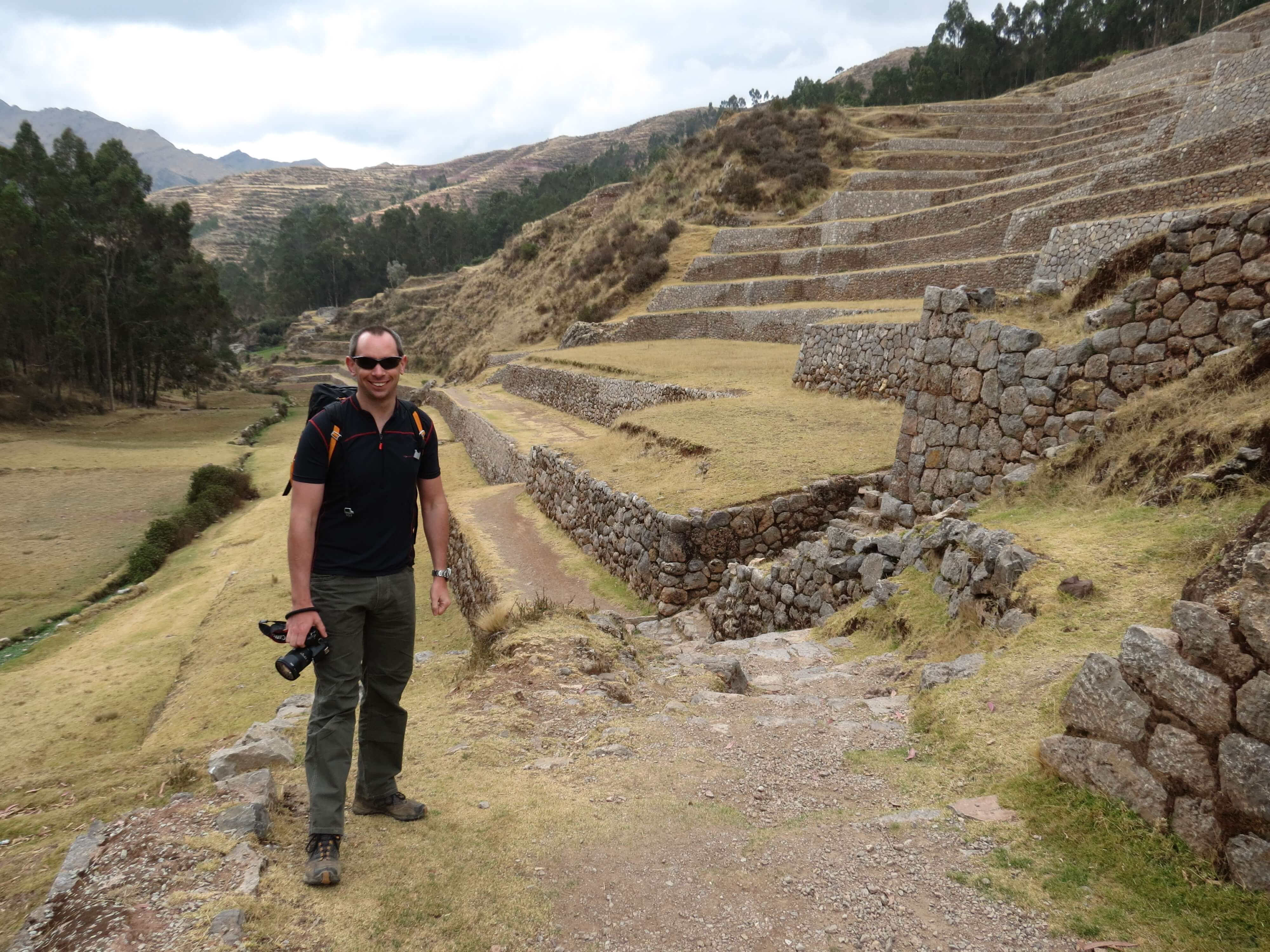
You don’t need a guide but if you want to really understand the environment you’re walking through, we do recommend it. We hired one through our accommodation near Urubamba, and were glad we did.
The trail begins in the Andean village of Chinchero, just 30 km north east of Cusco. Famous for its traditional weaving culture, Chinchero is also known as the birthplace of the rainbow! Just outside the village, the path traverses magnificent Incan agricultural terraces, which are still in use today. It feels rather like walking back through history, and we had it all to ourselves!

About halfway down the trail there’s an opportunity to scramble down to view some waterfalls. The path however is incredibly steep, and coming back up is a bit of a challenge. Having a head for heights is obligatory. Back on the main trail, the gorge is now at its most dramatic, with plunging mountainsides, distant views of snow-capped Andean peaks, and eagles soaring high overhead as you continue down to the sleepy hamlet of Urquillos and the end of the trail. The hike makes a perfect day trip from Cusco, and can be combined with a visit to the weaving collectives in Chinchero, or even a trip to Pisac.”
– Heather of Conversant Traveller
12. The Trek Gran Vilaya: 4 Days, Difficult
“The Trek Gran Vilaya, located in Cordillera Central, is one of my favorite treks in Peru – I have done a lot in that country! Because it combines great landscapes, history, and adventure, it is usually called the Inca Trail of the North (but it costs half price).
The ruins here are the main sights of the Chapapoyas, warriors who controlled this area from AD500 until their defeat by the Incan Empire in the 15th century.
The Trek Gran Vilaya (4 days and 3 nights) is a mystical trek through the jungle, beautiful valleys, lost citadels (some of them still to be discovered), great panoramas, and welcoming local people. The journey starts in the colonial city of Chachapoyas where you can book the trek with a local company.
When we did this trek in 2015 it was not well known yet so there were only 2-3 companies offering it, all located in Plaza de Armas. The funny thing is that all these companies were working with the same guide so regardless of who we booked with, Roger would be the guide. During the 4 days we walked an average of 6-7 hours per day, sometimes with steep inclines over 1400 m and descending 1000 m. We had the opportunity to visit some great Chachapoya sites like the watching warriors sarcophagi in Karaija, or the citadels of Pirquilla and Lanche, the latest uncovered from the jungle only 3 years ago. The last day was spent visiting Kuelap, Chachapoya’s main citadel and center of their power.”
– Elisa of World in Paris
13. Huayna Picchu: A Few Hours, Moderate
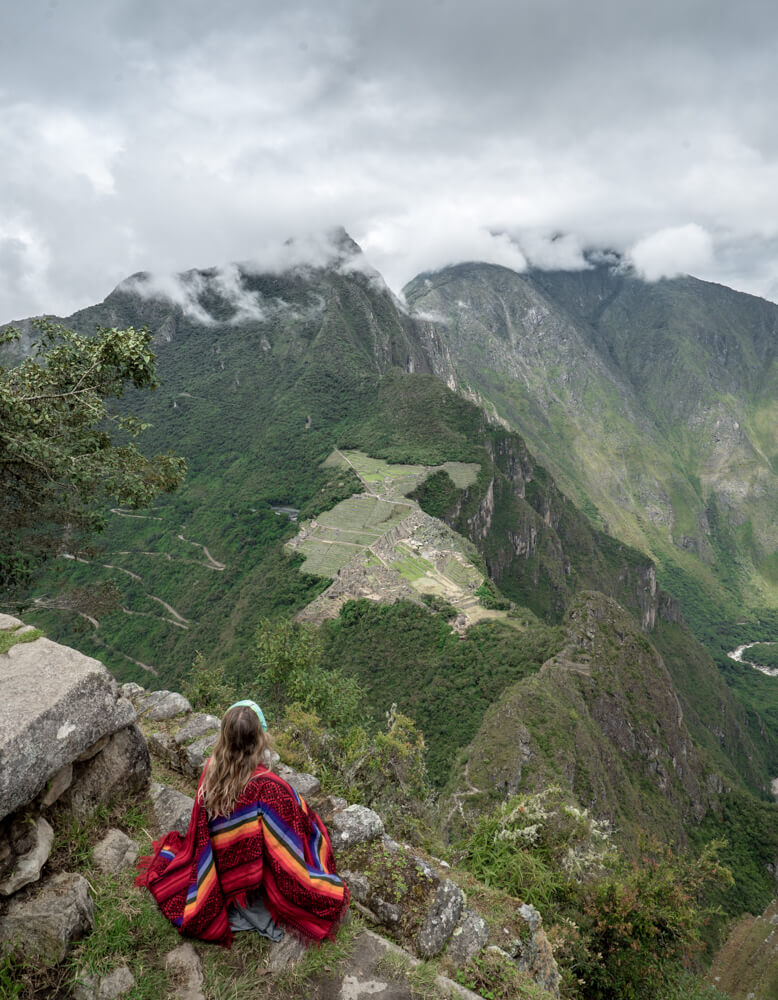
Huayna Picchu is the mountain that you see behind Machu Picchu in most photos, though most people who visit have no idea that you can actually climb this one as well! It requires a separate, rather expensive $50 permit, however it gives you an insane overview over Machu Picchu, pictured above.
The hike is steep, up relentless stairs, however it’s only about an hour or two to the top and is easy to tack onto the end of the Inca Trail if you’ve still got the energy. Book the permit well in advance as this one sells out!
Spanning many areas of the country over several mountain ranges, those are our favorite hikes in Peru. Ranging from just a few hours to over a week, these hikes each have their own unique beauty and reasons for doing them.
Peru, you sure are beautiful!
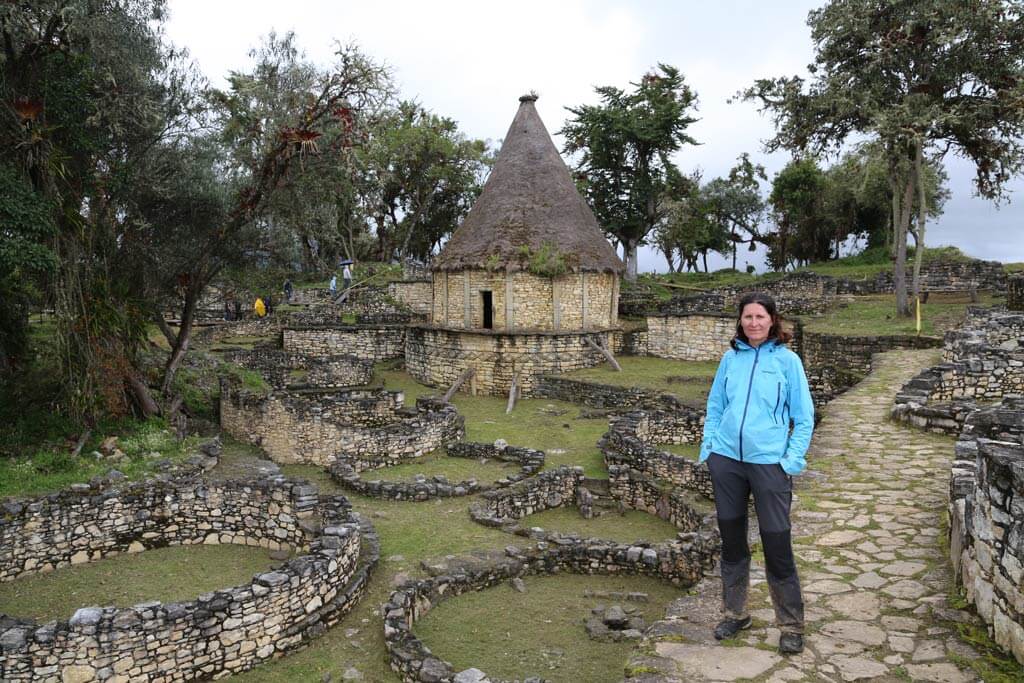
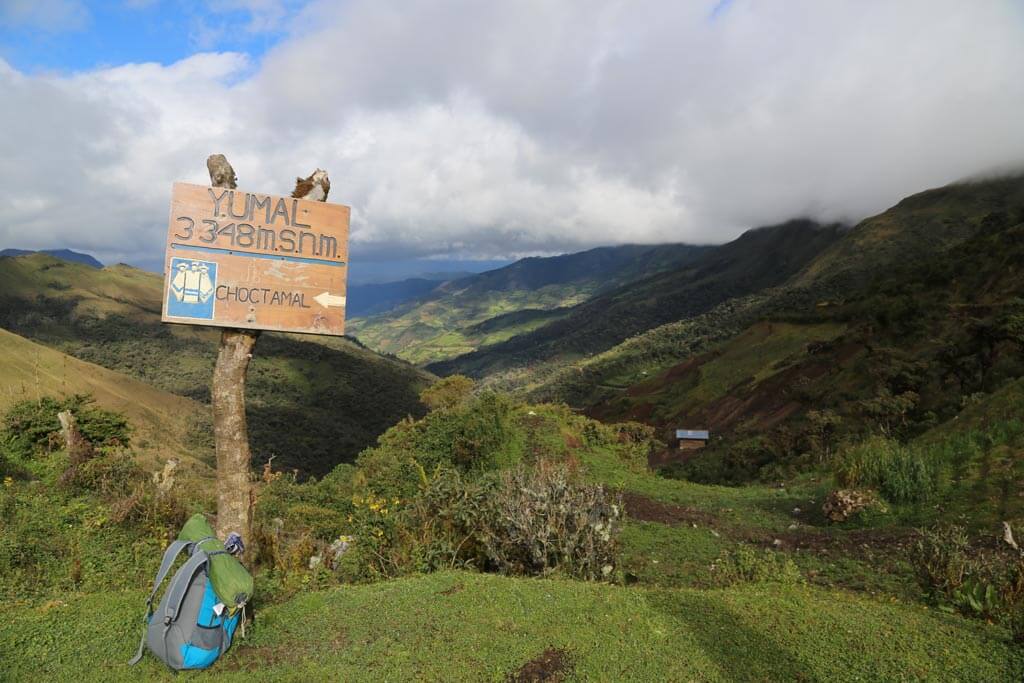
Dominique | dominiquetravels.com says
I envy all those people who can do those gorgeous hikes! I would really have to train more to be able to attempt even the moderately easy ones. I’m looking forward to my trip to Peru next week, but I only have hikes planned around the Colca Canyon 🙂
GG says
Hi BMTM Team!
What a great list you have compiled and it is also so neat how you brought together fellow travel bloggers from all over to contribute. In the end everyone has their specific focus and interest within traveling and are part of one community often with similar goals. The cooperation is great. Clearly when you chose Peru as your first tour, you did your research (like always) and found a true gem. Thing that is almost scary is after reading this blog for a while, there is an urgency to start traveling more because you need time to explore the nearly infinite choices you have around this beautiful planet we live in (both the people (at least most of them!) and nature). One question for you, Kristin. When you go back to Peru, what place would you consider next that you have never been to? I think it is nice that there are still less known places which are pretty much as nice as the one “popular spot”. And the ones where they are still excavating is really cool because I am into archaeological stuff.
Ijana Loss says
Noooo this means I’m gonna have to spend like 2 months in Peru if I don’t want to leave any of these hikes out! Luckily it’s an affordable country XD
Anonymous says
Marcahuasi altitude 4000 within one day from Lima is mission impossible.
Gordon Hanson says
Pretty cool that you put this out there for folks. I did most of those in 2001, and 2005/6. I’m curious about the Pirquilla/ Lanche being “uncovered” three years from your posting. I saw them in 2005 and 2006. And it might be cool for folks that you reach to know about Gocta, which back when I saw it didn’t even have a trail leading to it. Anyway, nice job on the tour treks advice!
Lorena says
Hey! I agree with you on most of the hikes you mentioned around the Cusco area. I lived here for more than half a year and happily I managed to do a few treks myself! The only one that I would add to your list is the Lares Trek.
Lares is one of the very few treks that are actually safe to do during the wet season and its valley and the small, local communities along the way can provide a beautiful experience.
Kristin says
I’ve heard goo things about that one! I didn’t do it myself but good to know about the rainy season.